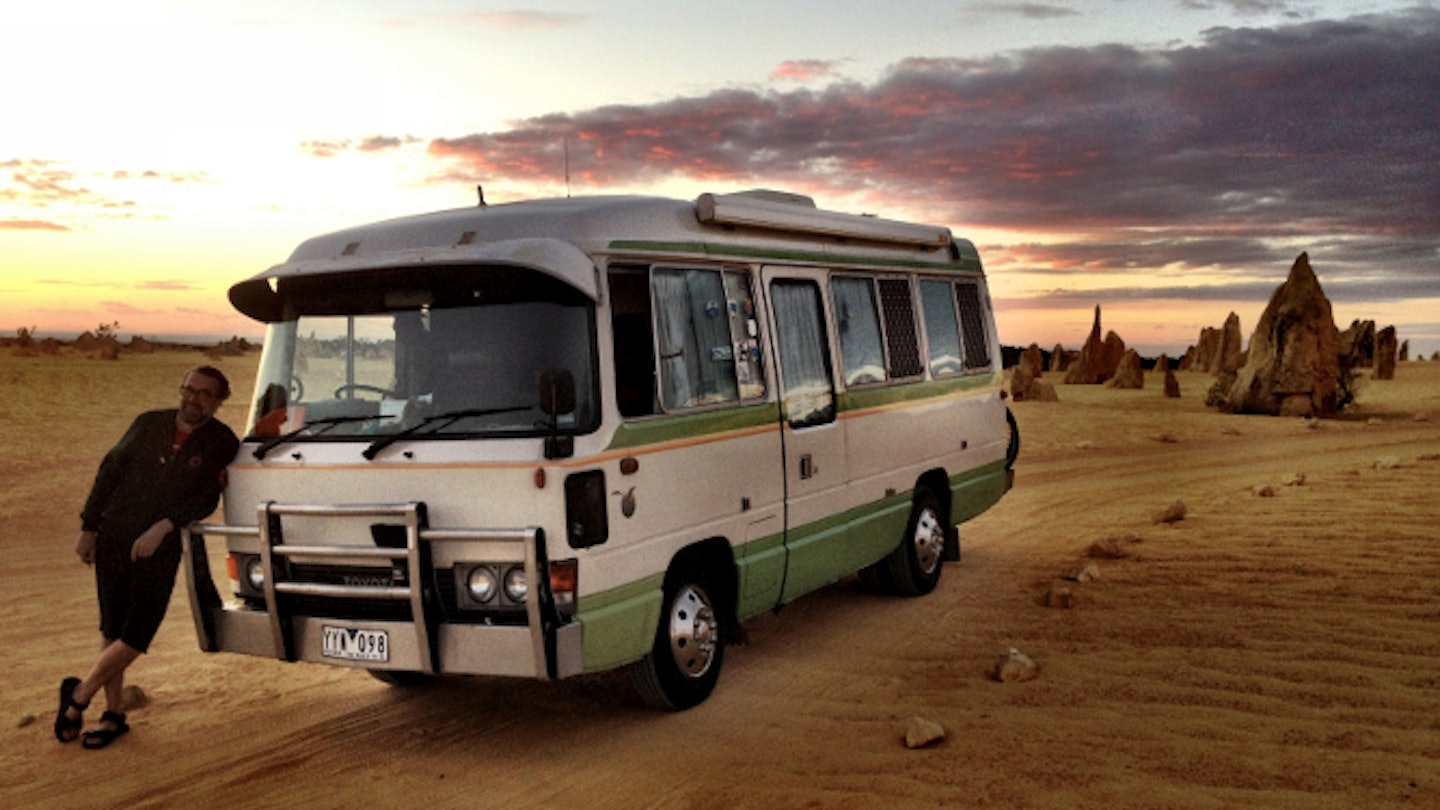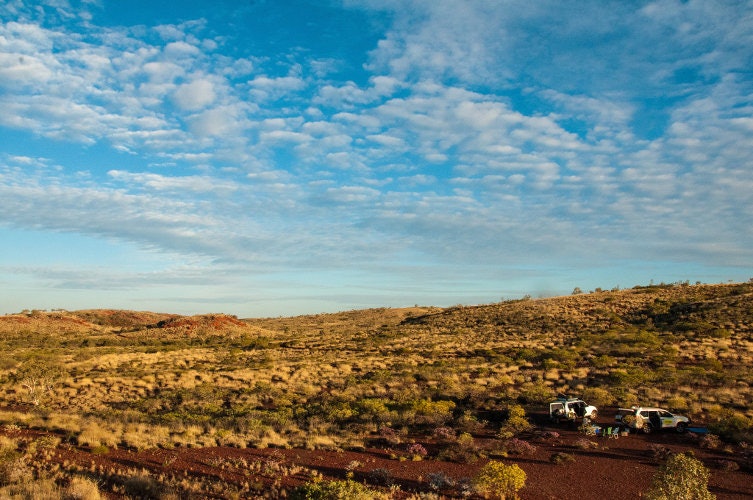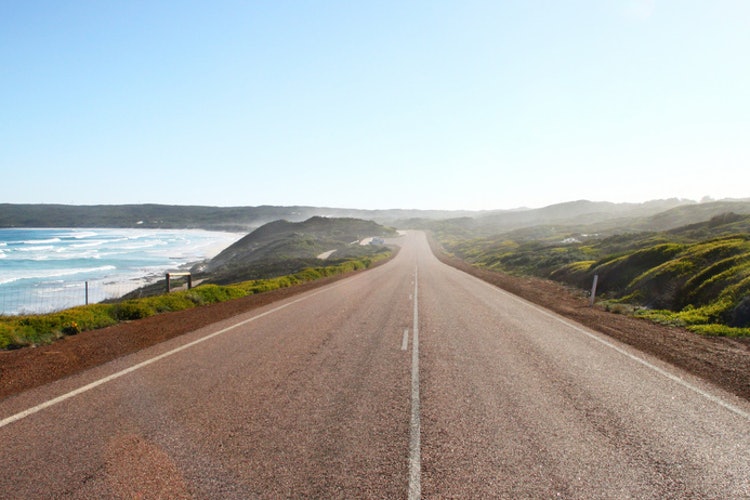Australia in a campervan: top tips from the experts
Sep 8, 2014 • 7 min read

Road trip Australia
One of the best ways to see Australia – the east coast, the west coast, or the whole country – is on a self-drive road trip in your own campervan. Whether you’ve decided to buy or rent your mobile home, we have some hard-won tips from our experts Lou and Ian McBirdwheel to you get you started on your campervan road trip Down Under.

Where to buy a campervan, motorhome or RV
Start your research early by trawling through sites like Caravan Camping Sales (caravancampingsales.com.au), Trading Post (tradingpost.com.au), CarPoint (carpoint.com.au), Gumtree (gumtree.com.au), eBay (eBay.com.au), Travellers Autobarn (travellers-autobarn.com.au), and Travel Wheels (travelwheels.com.au). These will give you a good idea on what is out there. The more you know, the better decisions you will make. The Caravan and Motorhome Club of Australia (CMCA; cmca.net.au) is the organisation for everything motorhomes. Though they may be aiming at the Grey Nomads market (thousands of retired Australians doing ‘the lap’ of Australia), their information and access to services are invaluable.
Upfront costs
You need to budget for the following, as well as the cost of your van: vehicle registration (in Australia this is called ‘rego’); insurance; getting a roadworthy certificate (RWC) for your rego transfer; and any mechanical checks you want to do before buying. Australian states have differing regulations, but in Victoria (down in the south) an overseas traveller can use the hotel or hostel they’re staying at for registration purposes.
Tip: If you have a rural address, your rego will cost less than if your vehicle is housed in the city. Many vehicles are sold with rego that can be transferred into your name, and you can also on-sell rego left on your vehicle when you're departing.
Our 1987 Toyota Coaster cost around $500 per year to comprehensively insure through the CMCA. You may decide to go for something cheaper, covering only damage to other’s vehicles not your own (third party insurance).
Tip: Removing the standard windscreen excess is worth considering, as one stray stone can ruin, not only your day, but also your budget.
A current RWC is mandatory for transferring ownership. Unless you’re a mechanic, don’t buy a vehicle that doesn’t already have one. Ironically, the RWC only proves the vehicle’s safety features are in good condition, not the actual engine!
Tip: Get a thorough independent mechanical check, ensuring that gas and electrical compliance plates are current too.
You only need a car licence if your vehicle weighs under 4.5 tonnes fully loaded; so you should be fine unless you're buying a large motorhome. It’s advised you get an international driving permit before you arrive in Australia.

What to consider before buying
Renting a campervan for a few days or a week before you invest in one can give you a feel for your requirements – do you really need an inside shower and toilet? There’s no substitute for match-practice to sort out priorities. We used a spade and dug a deep hole for toilet time. Consider the vehicle’s history and kilometres; fuel type and consumption; 2WD or 4WD; battery set up and power; water tanks; storage; and comfort. We cooked outside on a stove whenever possible, but if you plan to do your cooking inside, the vehicle's ventilation is something to consider too.
Tip: No matter how much you like a vehicle, don’t accept repairs and maintenance have been carried out without receipts confirming it. Ask for an up-to-date log of mechanical work completed before you make an offer.

What to look out for
Of course a secondhand campervan – and one that has done some kilometres already – will have some character (read: wear and tear). You will need to work out what repairs will cost you and what is a real issue that you won't be able to fix. As well as the vehicle's service history, it's best to check the following:
the instruments inside the cabin all work, from the fuel gauge to the indicators
seatbelts
tyre tread
the breaks, gears, steering all work well without any pulling or vibrating
rust or accident damage
oil should be honey-coloured and translucent
coolant should be clean and not rusty looking
no fumes, smoke, or rattles from the engine when it's running (leave the engine running for a while before and after your test drive)
the windscreen for cracks or chips.

What type of fuel
Whatever type of fuel, if you go fast, it’s gone fast. Your vehicle’s carting around the extra weight of a home (you know how snails go slow?). The size of your tanks, fuel type and average consumption determine how far you can drive between fill ups. All stations offer petrol; almost all, diesel; and most LPG – but not all. Calculate your fuel requirements and if you need a jerry can. The life of a well-maintained diesel engine is twice the kilometres of other engines.
Tip: Also watch your water consumption and make sure you check when that tank is running low.
Two or four-wheel drive
We drove a 2WD so we stuck to mostly-sealed roads and, weather permitting, some good dirt ones – not off-road. You can see plenty of Australia without getting a 4WD, but a whole lot more if you’re experienced in off-road driving.
Batteries
It’s best to have separate batteries for engine and campervan power – we bought a solar panel and could go off-grid for four days powering the lights and fridge. Freezers eat power.
Creature comforts
Make sure the windows have fly screens, that your campervan has an awning, and that the bed is big enough. Tall people take note!

What equipment to take on the road
Most sellers will pass on the accessories (and knowledge) they’ve acquired along the way. If you don’t have a shower, a $20 solar shower bag is worth the investment. We also bought a pop-up ‘privacy en-suite’ shower stall. However, ours had no pop-down instructions (the ever-handy YouTube how-to video attracted the comment ‘you saved our marriage’). At the end of a long drive we enjoyed, not the cheapest or most compact, but most comfortable folding chairs. Other things that are a must-have:
plenty of bedding
books
rechargeable head torches
roo whistles
12v power board to plug into cigarette lighter
inverter to use dry cell battery charger
rechargeable lantern
and music (lots of music).
A GPS is a great, but old-fashioned maps and guidebooks are more fun – and often more reliable.
Tip: When choosing your cellular data: Telstra will give you the best coverage – which means you can use your phone some of the time.
Re-selling your van at the end of your trip
Before you’ve finished your trip, start advertising – campervans can take months to sell. It’s best to finish in a main city with a good turnover of campervans. Keep all receipts, and download and print off the sale documentation.
Tip: It helps to take nice pictures of your steed in exotic places.

The Great Australian Road Trip: some commonsense advice
We found 400km per day was the upper driving limit – but – not every day!
Share the wheel and take a break every few hours; distances take longer than you think. The extra kilometres you spend on side trips will be the most memorable – an unnamed moonlit salt lake, a flat-topped iron mountain made of glockenspiel shards – the hurried and highway-bound just don’t get to see what makes an Australia road trip so remarkable.
An overly rigid schedule will deny you these experiences. So yes do some planning, but be flexible.
Get diurnal! Watch the sunrise and stop driving by 4pm, before 'kanga o’clock'. That’s when kangaroos are active and may jump in front of your campervan on a lonely stretch of road, beware.
It’s best to set up your site two hours before dark then settle down to watch the skies go through the pinky-blues.
Ask other travellers about roadside or free camping. Printed guides can date quickly, so talk to locals, other campervanners and, of course, those omnipresent Grey Nomads.
Caravan parks are handy for hot and cool showers, to plug in to mains power to charge up your house battery for some aircon on a really hot night, and to catch up on your laundry. Tip: Book caravan sites ahead in peak seasons – particularly in the north (April-October).
Now to enjoy the trip of a lifetime. Drive on!
Well-oiled travel writers Lou and Ian McBirdwheel's most recent trip was supposed to be a big drive around Australia. They bought a campervan to do the lap Down Under in six months, but only managed to get from Melbourne to Broome!



